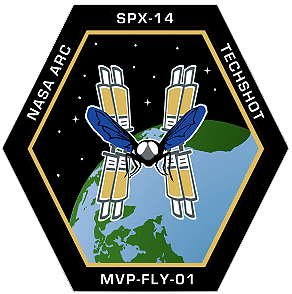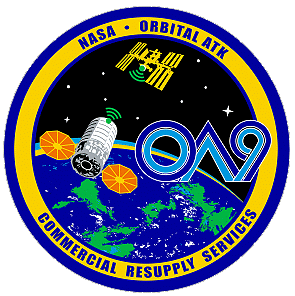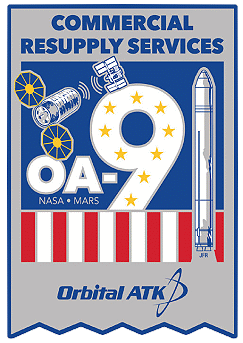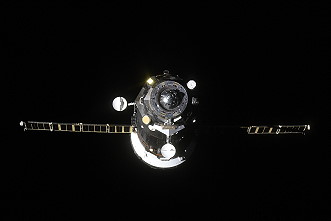Resident Crews of the International Space Station (ISS)
![]()
ISS: Expedition 55 |
 |
 |
 |
alternative crew photo |
|
 |
 |
 |
 |
 |
 |
![]()
Crew, launch- and landing data
| No. | Nation | Surname | Given names | Position | Spacecraft (launch) |
Launch date |
Launch time |
Spacecraft (landing) |
Landing date |
Landing time |
Mission duration |
Orbits |
| 1 | Shkaplerov | Anton Nikolayevich | ISS-CDR | Soyuz MS-07 | 17.12.2017 | 07:21:01.127 UTC | Soyuz MS-07 | 03.06.2018 | 12:39:13.5 UTC | 168d 05h 18m 12s | 2688 | |
| 2 | Artemyev | Oleg Germanovich | Flight Engineer-1 | Soyuz MS-08 | 21.03.2018 | 17:44:23.396 UTC | Soyuz MS-08 | 04.10.2018 | 11:44:38.3 UTC | 196d 18h 00m 15s | 3152 | |
| 3 | Feustel | Andrew Jay "Drew" | Flight Engineer-2 | Soyuz MS-08 | 21.03.2018 | 17:44:23.396 UTC | Soyuz MS-08 | 04.10.2018 | 11:44:38.3 UTC | 196d 18h 00m 15s | 3152 | |
| 4 | Arnold | Richard Robert II "Ricky" | Flight Engineer-3 | Soyuz MS-08 | 21.03.2018 | 17:44:23.396 UTC | Soyuz MS-08 | 04.10.2018 | 11:44:38.3 UTC | 196d 18h 00m 15s | 3152 | |
| 5 | Tingle | Scott David "Maker" | Flight Engineer-5 | Soyuz MS-07 | 17.12.2017 | 07:21:01.127 UTC | Soyuz MS-07 | 03.06.2018 | 12:39:13.5 UTC | 168d 05h 18m 12s | 2688 | |
| 6 | Kanai | Norishige | Flight Engineer-6 | Soyuz MS-07 | 17.12.2017 | 07:21:01.127 UTC | Soyuz MS-07 | 03.06.2018 | 12:39:13.5 UTC | 168d 05h 18m 12s | 2688 |
unofficial Backup Crew
| No. | Nation | Surname | Given names | Position |
| 1 | Prokopyev | Sergei Valerievich | ISS-CDR | |
| 2 | Ovchinin | Aleksei Nikolaevich | Flight Engineer | |
| 3 | Hague | Tyler Nicklaus "Nick" | Flight Engineer | |
| 4 | Gerst | Alexander | Flight Engineer | |
| 5 | Epps | Jeanette Jo | Flight Engineer |
 |
 |
 |
 |
Expedition Report
|
ISS Expedition 55 began with the undocking of
spacecraft Soyuz
MS-06 on February 27, 2018 at 23:08:36
UTC. The former Expedition 54 (Aleksandr
Misurkin, Mark
Vande
Hei and Joseph
Acaba) returned safely to Earth. On March 13, 2018, an ISS reboost was performed using Progress MS-08 thrusters. This reboost was to set up for Soyuz MS-08 launch planned on March 21, 2018. The engines started at 21:25:54 UTC and fired 108 seconds. The ISS got 0.22 m/sec. more speed. The actual parameters are 403.2 km x 424.3 km. The ISS needs 92.60 minutes for each orbit. Following a two-days solo flight Soyuz MS-08 docked to ISS on March 23, 2018. Oleg Artemyev, Andrew Feustel and Richard Arnold became the ISS Expedition 55 (together with ISS Expedition 54 crew members Anton Shkaplerov, Scott Tingle and Norishige Kanai). With the arrival Expedition 55 became a six-person-crew. Filled with trash, the unpiloted Russian cargo ship Progress MS-07 undocked from the Pirs module of the International Space Station at 13:50:34 UTC on March 28, 2018. On April 26, 2018, Russian flight controllers will send commands to fire the Progress' engines on April 26, 2018 and deorbit the space freighter, sending it to a destructive entry over the unpopulated South Pacific Ocean. On March 29, 2018 Andrew Feustel and Richard Arnold performed an unscheduled spacewalk (6h 10m). They installed wireless communications equipment (External Wireless Communications - EWC) on the station's Tranquility module to enhance payload data processing for the ECOsystem Spaceborne Thermal Radiometer Experiment on Space Station (ECOSTRESS) experiment being flown to the station on a future SpaceX Dragon cargo spacecraft (planned in June 2018). The experiment will measure the temperature of plants on Earth to better understand how much water they need and how they respond to stress. The crew members also swapped out high-definition video cameras on the port truss of the station's backbone and removed aging hoses from a cooling component on the station's truss. NASA commercial cargo provider SpaceX launched its 14th commercial resupply services mission to the International Space Station at 20:30:38 UTC on April 02, 2018. Loaded with almost 5,800 pounds (2,630 kg) of research, crew supplies and hardware, the SpaceX Dragon spacecraft (CRS-14 or SpX-14) launched on a Falcon 9 rocket from Space Launch Complex 40 at Cape Canaveral Air Force Station (CCAFS) in Florida. The Dragon cargo spacecraft was previously flown on SpaceX's eighth commercial resupply mission to the station for NASA. Dragon delivered several science investigations to the space station in support the Expeditions 55 and 56, including: The Atmosphere-Space Interactions Monitor, an Earth observatory that will study severe thunderstorms and their role in the Earth's atmosphere and climate. An investigation that seeks to better understand how the lack of gravity affects a process used to produce high-performance products from metal powders. This research could lead to improved manufacturing techniques. Continuing research on growing food in space, as the Veggie Passive Orbital Nutrient Delivery System experiment tests a new way to deliver nutrients to plants. Among the cargo that will enable National Laboratory research, which is managed by the Center for the Advancement of Science in Space, is a platform that will enable testing of materials, coatings, and components in the harsh environment of space, and investigations into the process of antibiotic release and technology for the evaluation of drug safety and effectiveness. About 10 minutes after launch, Dragon reached its preliminary orbit and deployed its solar arrays. A carefully choreographed series of thruster firings are scheduled to bring the spacecraft to rendezvous with the space station. On April 04, 2018 Scott Tingle and Norishige Kanai captured Dragon using the space station's robotic arm (10:40 UTC). Ground controllers then sent commands to robotically install the spacecraft on the station's Harmony module (13:07 UTC). Andrew Feustel took with him to space a copy of a special drawing entitled "Moon Landscape" which was created by a Jewish Czech boy named Petr Ginz while incarcerated in Terezin, Czechoslovakia, during World War II. The drawing depicts how Earth would look from the surface of the moon. Petr was fascinated by science fiction and inspired by his favorite author, Jules Verne, to draw and write stories about a far-off world he would never visit. At the age of 16, Petr lost his life at Auschwitz. A replica of the drawing was first flown to space in 2003 by the late Israeli astronaut Ilan Ramon, whose mother was a Holocaust survivor. Ilan Ramon flew aboard the Space Shuttle Columbia, and in a horrible tragedy, he and his six crew mates lost their lives when the shuttle broke apart during re-entry. Holocaust Remembrance Day, recognized on April 12, is a national day of commemoration in Israel, on which those lost in the Holocaust are memorialized. Israel marks this day with ceremonies, and Andrew Feustel also recorded a video message that will be played at Yad Vashem, Jerusalem. On April 18, 2018, an ISS reboost was performed using Progress MS-08 thrusters. This reboost was to set up for Soyuz MS-07 landing planned on June 03, 2018 and Soyuz MS-09 launch planned on June 06, 2018. The engines started at 10:50 UTC and fired 126.5 seconds. The ISS got 0.25 m/sec. more speed. The actual parameters are 403.7 km x 421.9 km. The ISS needs 92.60 minutes for each orbit. After delivering more than 5,800 pounds (2,630 kg) of cargo, a SpaceX Dragon (CRS-14 or SpX-14) cargo spacecraft departed the International Space Station on May 05, 2018. Flight controllers used the space station's Canadarm2 robotic arm to detach Dragon, which arrived on April 04, 2018, from the Earth-facing side of the station's Harmony module. After Dragon was maneuvered into place, the spacecraft was released by a ground-controlled command monitored by Scott Tingle at 13:23 UTC. Dragon's thrusters were fired to move the spacecraft a safe distance from the station before SpaceX flight controllers in Hawthorne, California, commanded its deorbit burn. The spacecraft splashed down at about 19:00 UTC in the Pacific Ocean, where recovery forces retrieved Dragon and more than 4,000 pounds (1,814 kg) of cargo. On May 12, 2018, an ISS reboost was performed using Progress MS-08 thrusters. This reboost was to set up for Soyuz MS-07 landing planned on June 03, 2018 and Soyuz MS-09 launch planned on June 06, 2018. The engines started at 22:07 UTC and fired 172 seconds. The second spacewalk in this expedition occurred on May 16, 2018 by Andrew Feustel and Richard Arnold (6h 31m). They moved a component called a Pump Flow Control Subassembly (PFCS) from a spare parts platform on the station's truss "backbone" to the Special Purpose Dexterous Manipulator (Dextre) robotic arm. The PFCS drives and controls the flow of ammonia through the exterior portions of the station's cooling system. Robotics controllers on Earth used Canadarm2 and Dextre to perform final installation on the port-side truss for checkout. The spacewalkers removed a failed PFCS and return it to the spare parts depot. They also replaced a camera system on the Destiny Laboratory and a communications receiver. On May 21, 2018 at 08:44:09.7 UTC Orbital ATK launched its Cygnus OA-9 ("S.S. J.R. Thompson") spacecraft on an upgraded Antares rocket from the Mid-Atlantic Regional Spaceport's Pad-0A. Cygnus carried about 7,400 pounds (3,350 kg) of science and research to the space station in support of dozens of research investigations, as well as crew supplies and hardware. Cygnus carried a physics laboratory to observe atoms in extreme cold and a facility that is the first commercial European opportunity to conduct research in space. Other experiments are advance genetic sequencing of micro-organisms aboard the station and validate a system to extract one liquid from another. The spacecraft also transported several CubeSats to conduct a variety of missions, from Earth science missions and a technology demonstration for laser communications, to mapping a gas surrounding our Milky Way galaxy. Included in the cargo in the pressurized area of Cygnus was a centuries-old method of celestial navigation. The Sextant Navigation investigation will explore the use of a hand-held sextant for emergency navigation on missions in deep space as humans look to travel farther from Earth. The ability to sight angles between the Moon or planets and stars offers crews another option to find their way home if communications and main computers are compromised. Monitoring crew health and the biological environment of the space station, and understanding long-term effects of space travel on both, are critical to NASA's plans for long-duration, deep space exploration. The Biomolecule Extraction and Sequencing Technology (BEST) study is the agency's next step toward advancing in-space DNA sequencing technologies that can identify microbial organisms living on the space station and understanding how the DNA of humans, plants and microbes are affected by microgravity. BEST will use a process that sequences DNA directly from a sample, with minimal preparation, rather than using the traditional technique of growing a culture from the sample. In the realm of modern physics, the new Cold Atom Lab (CAL) on Cygnus could help answer some big questions. CAL creates a temperature 10 billion times colder than the vacuum of space, then uses lasers and magnetic forces to slow down atoms until they are almost motionless. In the microgravity environment of the space station, CAL can observe these ultra-cold atoms for much longer than possible on Earth. Results of this research could lead to a number of improved technologies, including sensors, quantum computers and atomic clocks used in spacecraft navigation. This was the ninth planned cargo resupply mission by Orbital ATK for NASA under the agency's $1.9 billion Commercial Resupply Services contract with the company. Cargo resupply from U.S. companies ensures a national capability to deliver critical science research to the space station, significantly increasing NASA's ability to conduct new science investigations to the only laboratory in microgravity. The freighter arrived at the station on May 24, 2018. Scott Tingle grappled the spacecraft (09:26 UTC), backed up by Richard Arnold. Andrew Feustel monitored Cygnus systems during its approach for capture. They used the space station's robotic Canadarm2 to take hold of the spacecraft and after Cygnus' capture, ground controllers commanded the station's arm to rotate and installed it on the bottom of the station's Unity module (12:13 UTC). Cygnus remained at the space station until July 15, 2018, when the spacecraft departed the station, deployed NanoRacks' customer CubeSats, and then disposed of several tons of trash during its fiery reentry into Earth's atmosphere. Finally, the station command changed from Russian cosmonaut Anton Shkaplerov to US astronaut Andrew Feustel. With undocking of Soyuz MS-07, carrying Anton Shkaplerov, Scott Tingle and Norishige Kanai, on June 03, 2018 at 09:16:36 UTC the Expedition 55 concluded and the new ISS Expedition 56 began. Among the US experiments are: Studying Our Atmosphere for Thunder and Lightning The Atmosphere-Space Interactions Monitor (ASIM) will observe Earth from outside the International Space Station. It will look for severe thunderstorms, which track upper-atmospheric lightning suggested to result from run-away electron discharge. This form of lightning occurs well above normal lightning or storm clouds and observation will tell scientists more about the role of severe thunderstorms in Earth's atmosphere and climate. Testing Microgravity's Impact on Bone Marrow Scientists believe that microgravity may have a negative impact on bone marrow and the blood cells it produces. On Earth, long-duration bed rest can impact patients' bone marrow and something similar may happen in microgravity. The Bone Marrow Adipose Reaction: Red or White (MARROW) investigation will measure the extent microgravity's impact on bone marrow and its blood cells as well as study the recovery process. The results of this investigation will benefit both health and space research. Studying Materials' Reactions to Space The Materials ISS Experiment Flight Facility (MISSE-FF) will support testing of materials, coatings and components in the harsh environment of space. This Alpha Space developed platform will be accessible to the private sector and government organizations and leverage the low-Earth orbit (LEO) environment to support integrated testing materials' reaction to ultraviolet radiation (UV), atomic oxygen (AO), ionizing radiation, ultrahigh vacuum (UHV), charged particles, thermal cycles, electromagnetic radiation, and micro-meteoroids. Simulating Gravity aboard the Space Station Developed by Techshot, the Multi-use Variable-g Platform (MVP) can simulate up to 2 g of artificial gravity with two internal carousels that spin simultaneously. MVP will be used aboard the space station to research a wide variety of sample types, such as fruit flies, flatworms, plants, fish, cells, protein crystals, and many others. |
EVA data
| Name | Start | End | Duration | Mission | Airlock | Suit | |
| EVA | Feustel, Andrew | 29.03.2018, 13:33 UTC | 29.03.2018, 19:43 UTC | 6h 10m | ISS-55 | ISS - Quest | EMU No. 3006 |
| EVA | Arnold, Richard | 29.03.2018, 13:33 UTC | 29.03.2018, 19:43 UTC | 6h 10m | ISS-55 | ISS - Quest | EMU No. 3003 |
| EVA | Feustel, Andrew | 16.05.2018, 11:39 UTC | 16.05.2018, 18:10 UTC | 6h 31m | ISS-55 | ISS - Quest | EMU No. 3006 |
| EVA | Arnold, Richard | 16.05.2018, 11:39 UTC | 16.05.2018, 18:10 UTC | 6h 31m | ISS-55 | ISS - Quest | EMU No. 3003 |
Photos
 |
 |
 |
 |
 |
 |
 |
 |
 |
 |
 |
 |
 |
 |
 |
 |
 |
 |
 |
 |
 |
 |
 |
 |
 |
 |
 |
 |
 |
|
more EVA photos |
|
more Earth observation photos |
|
more onboard photos |
|
| © |  |
Last update on December 15, 2020.  |
 |